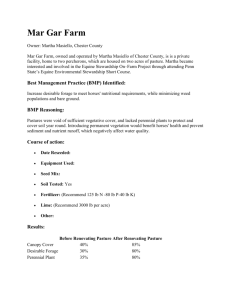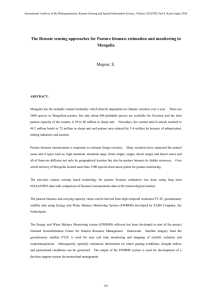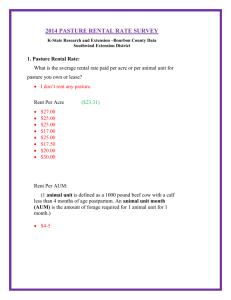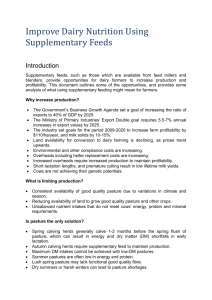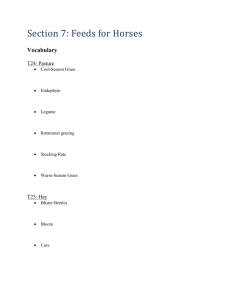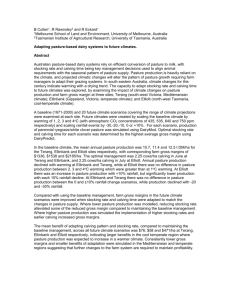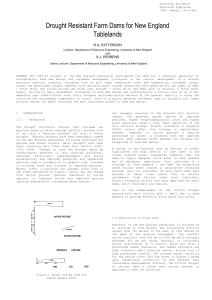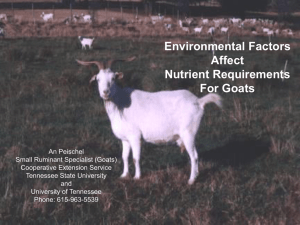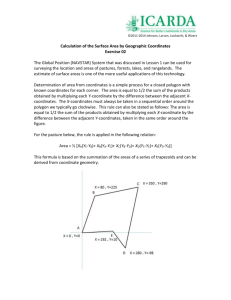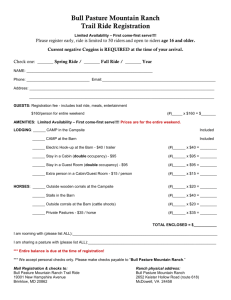Cullen et al Climate change impact and adaptation in
advertisement
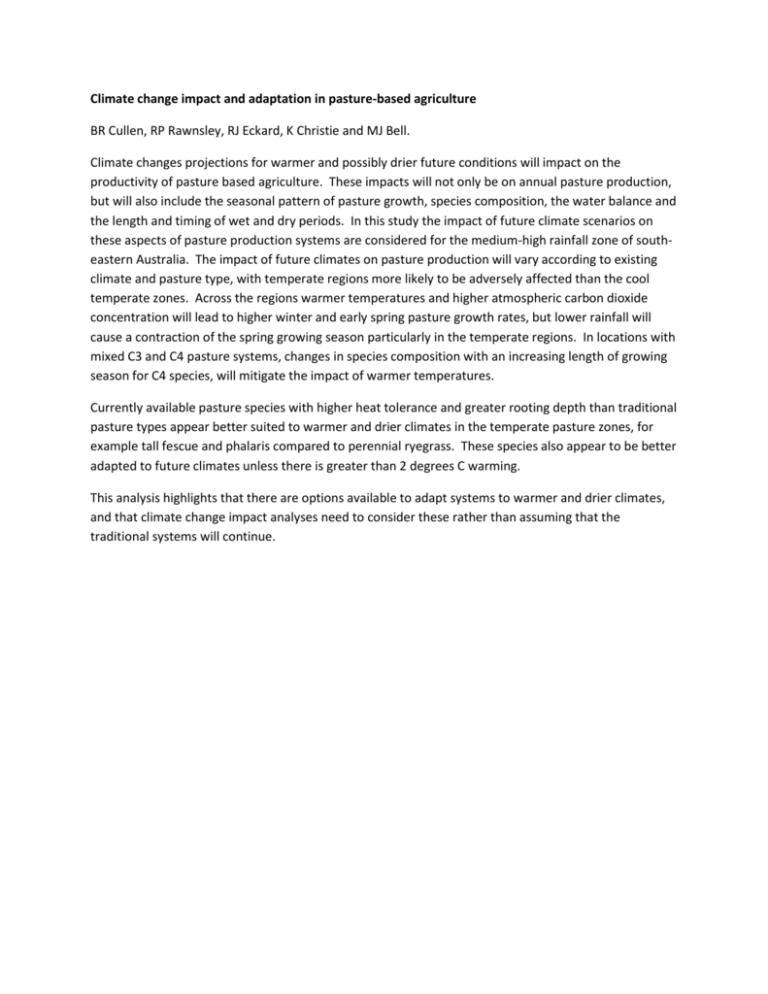
Climate change impact and adaptation in pasture-based agriculture BR Cullen, RP Rawnsley, RJ Eckard, K Christie and MJ Bell. Climate changes projections for warmer and possibly drier future conditions will impact on the productivity of pasture based agriculture. These impacts will not only be on annual pasture production, but will also include the seasonal pattern of pasture growth, species composition, the water balance and the length and timing of wet and dry periods. In this study the impact of future climate scenarios on these aspects of pasture production systems are considered for the medium-high rainfall zone of southeastern Australia. The impact of future climates on pasture production will vary according to existing climate and pasture type, with temperate regions more likely to be adversely affected than the cool temperate zones. Across the regions warmer temperatures and higher atmospheric carbon dioxide concentration will lead to higher winter and early spring pasture growth rates, but lower rainfall will cause a contraction of the spring growing season particularly in the temperate regions. In locations with mixed C3 and C4 pasture systems, changes in species composition with an increasing length of growing season for C4 species, will mitigate the impact of warmer temperatures. Currently available pasture species with higher heat tolerance and greater rooting depth than traditional pasture types appear better suited to warmer and drier climates in the temperate pasture zones, for example tall fescue and phalaris compared to perennial ryegrass. These species also appear to be better adapted to future climates unless there is greater than 2 degrees C warming. This analysis highlights that there are options available to adapt systems to warmer and drier climates, and that climate change impact analyses need to consider these rather than assuming that the traditional systems will continue.

